Each of us may have some unused glass bottles or jars at home, and they may be collecting dust in a corner. Have you ever thought about repurposing them? Painting glass bottles is an art that stands out for its simplicity yet immense creative potential. Not only does this craft give a new lease of life to otherwise discarded bottles, but it also allows for endless personalization, making each piece a unique work of art. Whether you’re a seasoned artist or a novice looking for a new hobby, painting glass bottles can be a delightful and eco-friendly way to express your creativity.
Why Paint Glass Bottles?
Repurposing glass bottles is a great way to reduce waste. Instead of throwing them away, you’re giving them a new purpose. This not only helps in minimizing the amount of waste that ends up in landfills but also reduces the need for producing new glass items, thereby saving energy and resources.
By painting your glass bottles, you have the complete freedom to create designs that resonate with your style and personality. From intricate patterns to simple yet elegant designs, the possibilities are endless. These personalized bottles can serve as perfect home decor items, thoughtful gifts, or even as branded merchandise for businesses.
Engaging in creative activities like painting has been known to have therapeutic effects. It can be a relaxing and meditative process, helping to alleviate stress and improve mental well-being. It’s a chance to take a break from the digital world and immerse yourself in a hands-on activity.
Before diving into the world of glass bottle painting, there are a few things you need to know to get started. This guide will walk you through the essential materials, preparation steps, painting techniques, and more, ensuring that even beginners can create beautiful pieces of art. Let’s move now!
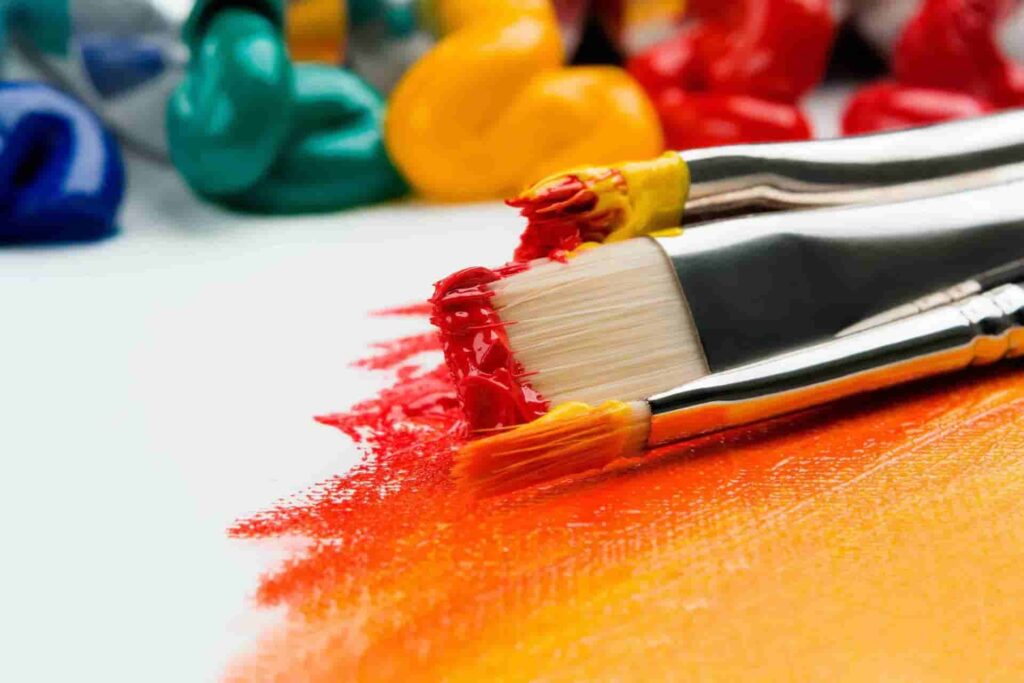
Materials Needed
Before you begin, gather all the necessary materials. You will need:
Glass Bottles or Jars: Ensure they are clean, dry, and free of labels (learn the way to remove labels in another blog).
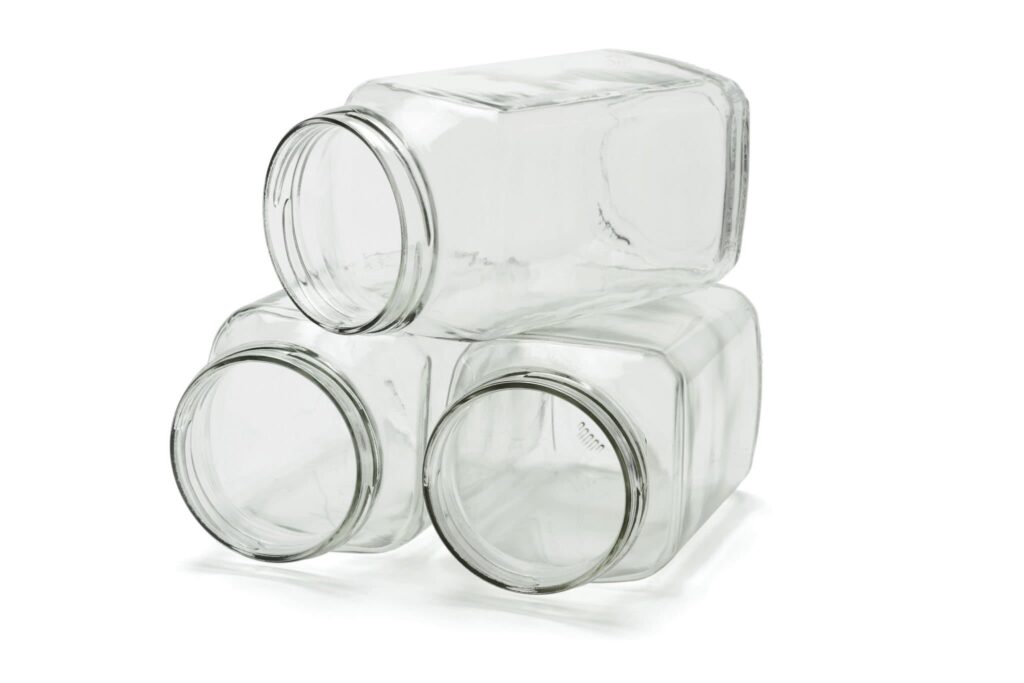
Paints: Acrylic or enamel paints are ideal for glass. You should consider purchasing paints specifically formulated for glass for the best results.
Brushes and Tools: Have a variety of brushes on hand – fine tips for detailed work and wider brushes for base coats.
Other Supplies: Painter tape for clean lines, stencils for specific designs, a palette for mixing colors, and a cup of water for cleaning brushes.
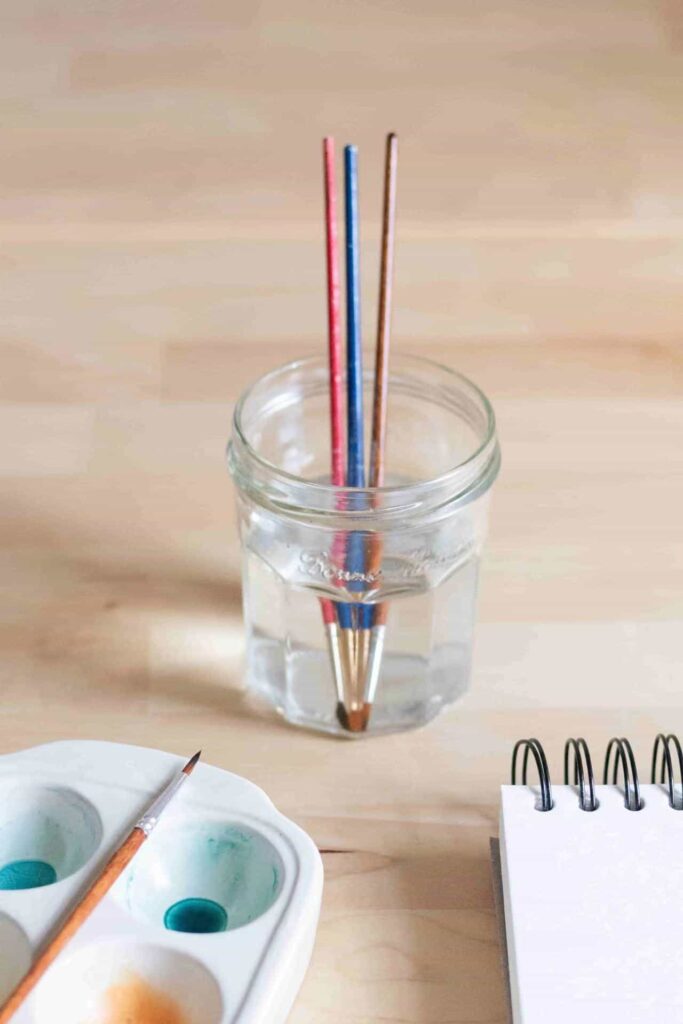
Preparing Your Workspace
Cleaning the glass containers: Soak the empty glass containers in warm soapy water to remove labels and glue. Wipe them down with rubbing alcohol to ensure they are completely free of oils and dirt.
It’s better to cover your work surface with newspapers or a plastic sheet to make sure your place will stay clean after we finish the artwork. Please organize your paints, brushes, and other tools within easy reach.
Painting Techniques
▶ Basic Painting Tips
Applying the Base Coat: Start with a thin, even coat of paint. Let it dry completely before adding additional layers.
Smooth Painting: Use long, even strokes to avoid brush marks. For larger areas, sponge brushes can be an excellent tool.
▶ Advanced Decorative Techniques
Stenciling: Use adhesive stencils for precise designs. Apply paint with a dabbing motion for best results.
Sponging and Marbling: These techniques add texture and depth. Experiment with different sponges and colors to achieve various effects.
Creating Textures and Patterns: Use painter’s tape for stripes or geometric designs. Dotting tools can create interesting patterns.
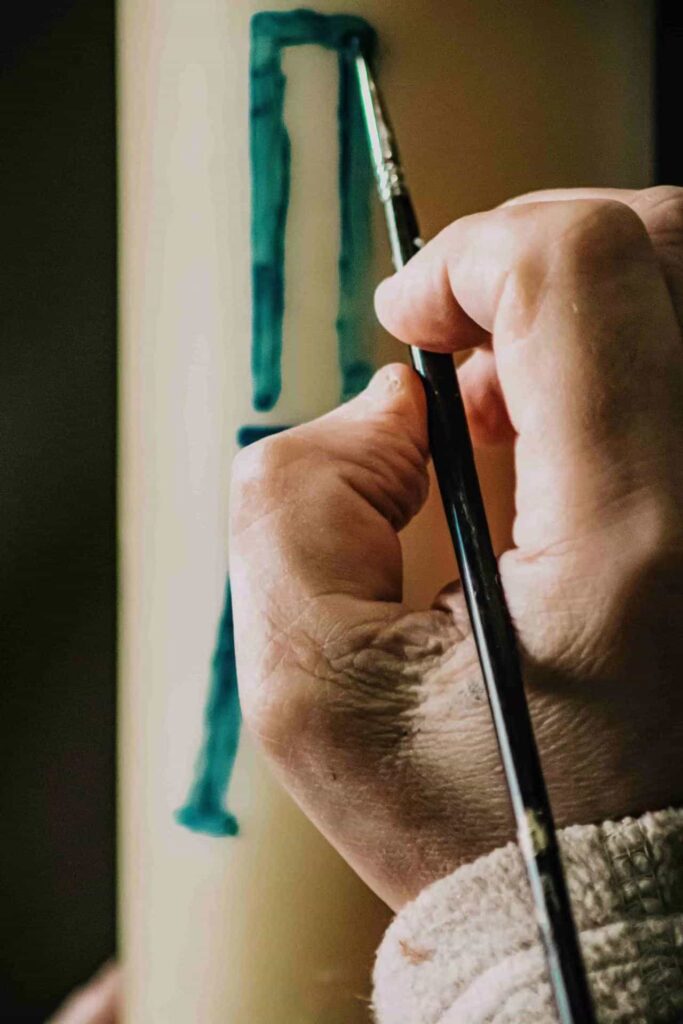
Design Ideas and Inspiration
Seasonal Themes: Think about painting bottles with Christmas, Halloween, or Spring themes. Use colors and motifs associated with these occasions.
Abstract Designs: Let your imagination run wild with abstract patterns. Mix colors and shapes to create eye-catching designs.
Personalization: Add a personal touch by incorporating names, significant dates, or inspirational quotes into your design.
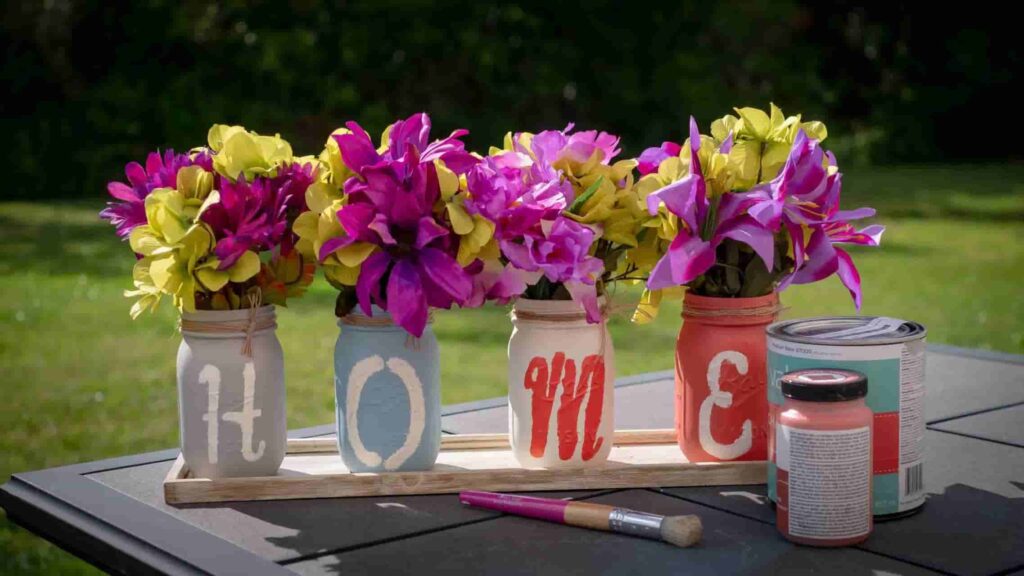
Sealing and Curing the Paint
Once your design is complete, it’s essential to seal the paint. Use a clear acrylic sealer spray for a protective coat. For certain types of paint, you might need to cure the bottle, either by air drying it for several days or baking it in an oven, according to the paint manufacturer’s instructions.
Tips for Maintenance and Cleaning
To keep your painted bottles looking their best, handle them gently and dust them regularly. Avoid washing them under running water. Instead, gently wipe them with a damp cloth. Do not soak them in water or use abrasive cleaners.
Painting glass bottles is more than just a craft; it’s a journey of creativity and sustainability. Each bottle you paint is a step towards reducing waste and a chance to create something beautiful and unique. The possibilities are endless, whether you’re making a personalized gift, adding to your home décor, or just enjoying a peaceful crafting session.
Frequently Asked Questions
How long does the paint take to dry? This can vary, but typically it takes about an hour for the surface to dry to the touch. Complete curing may take longer.
Can painted glass bottles be used for food and drinks? It’s not recommended to store food or beverages in painted bottles, especially if the paint is on the inside.
How do I prevent the paint from peeling off the glass? To prevent peeling, ensure the glass is thoroughly cleaned before painting. Using a primer designed for glass can also help the paint adhere better. Sealing the paint with a clear sealer after it dries is crucial for longevity.
Can I use regular acrylic paint on glass bottles? Regular acrylic paint can be used, but it might not adhere as well or be as durable as paint specifically formulated for glass. To improve durability, use a suitable primer and always seal your finished work.
How do I remove paint from a glass bottle if I make a mistake? If the paint is still wet, it can be wiped off with a damp cloth. For dried paint, gently scraping with a razor blade or using a paint remover can be effective. Be careful not to scratch the glass.
How long should I wait between coats of paint? It’s best to wait until the first coat is completely dry to the touch before applying a second coat. This usually takes about one hour, but it can vary depending on the paint type and environmental conditions.
Can these painted bottles be used as vases for fresh flowers? Painted bottles can be used as vases, but water should not come into direct contact with the paint. Consider using a liner or inserting a smaller glass container inside for water.










